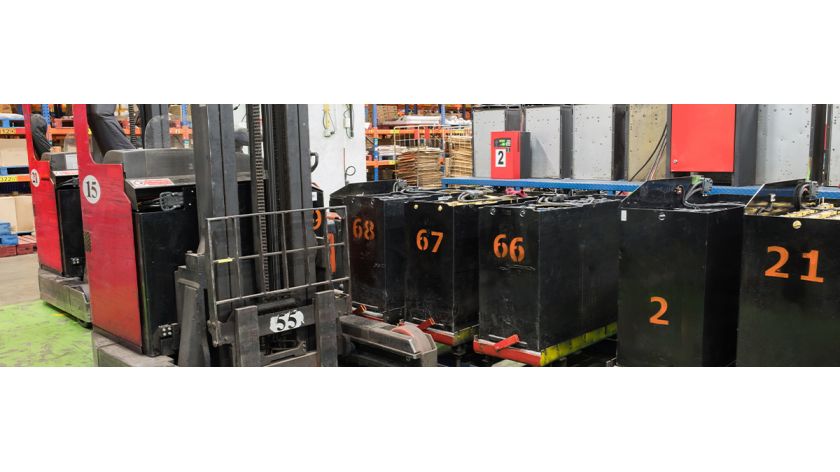In the hustle and bustle of day-to-day operations, it's often easy to forget the procedures we should follow to extend the life of our forklift batteries. Because batteries are so expensive, and they have a finite life, it is essential that you use proper care and maintenance to prolong their life and get the most out of your investment. Here are some best practices for forklift battery use and maintenance to maximize battery life.
New batteries typically start with a useful life of 1,500 charging cycles. It’s important to remember that you use up one of those cycles each time you attach the battery to the changer; it can’t distinguish between a half-charging and a full-charging cycle. Thus, you should never waste a charging cycle on half-charging. A battery charged once a day can last you up to 5 years. Adding in a half-charging cycle can reduce the battery’s life by over half. The ideal time to recharge your battery is when it has reached at least a 30% charge but before it gets below 20%. Charging it before 30% is wasteful while waiting for it to go lower than 20% can shorten the lifespan of the battery or cause it to overheat and cause damage to your lift truck. Make sure the battery is charged to at least 80% and ideally 100% before disconnecting it from the charger to get the most out of the charging cycle and to prevent injury.
If your forklift uses a flooded battery, make sure that you are watering it according to the manufacturer’s recommendations. Water is important because it protects the active material inside the battery. However, be careful not to overwater the battery as this can cause it to overflow and spill out sulfuric acid. Deionized or distilled water should be added AFTER the charging cycle. Watering the battery before charging can cause it to overflow during the charging cycle. If you see white crystals on the lead plate, stop using the battery immediately and have it serviced. Furthermore, make sure you are equalizing your battery regularly. This rebalances the battery’s acid concentration levels and helps prevent stratification. Another important part of batter maintenance is cleaning it at least once a month. Failing to do so can cause chemical build up, leading to tray corrosion and potentially voiding the manufacturer’s warranty.
In addition to charging your battery at the correct time, it’s also important to use the correct charger. When selecting a charger, make sure it’s one that has the right Amp hour (Ah) rating and that is has the correct output voltage to match the battery you are charging. You can usually find the battery’s voltage and Ah capacity on its data tag. If you replace your forklift battery, make sure the charger is adjusted to the new battery’s specifications. Failing to do so can shorten the life of the battery and/or limit the amount of charging it receives.
Finally, it’s important that you follow all safety precautions when charging a forklift battery. Metallic jewelry should be removed and appropriate personal protection equipment (PPE) should be worn; this includes acid resistant steel toe shoes, safety glasses, apron and gloves. The battery should be charged in an area with adequate ventilation and you should ensure there are no open flames, sparks or electrical arcs in the area. Make sure there are suitable facilities for eye and body washing nearby and procedures in place in the event of an emergency.
By following these best practices of battery maintenance and charging, you can get the most out of your investment and keep you equipment running smoothly for years to come. TVH carries everything you need to keep your forklift running, including batteries, chargers, watering systems, PPE and more.





